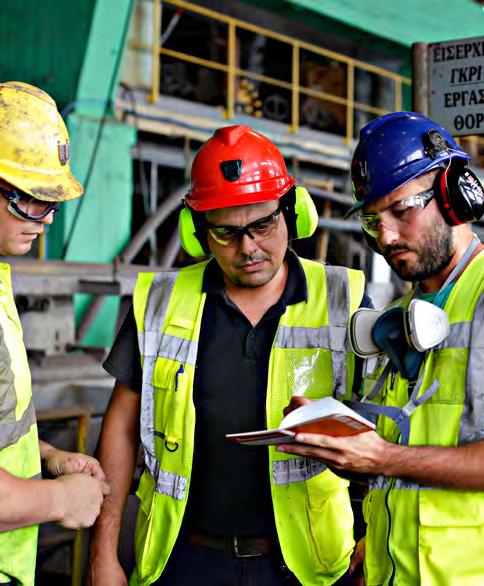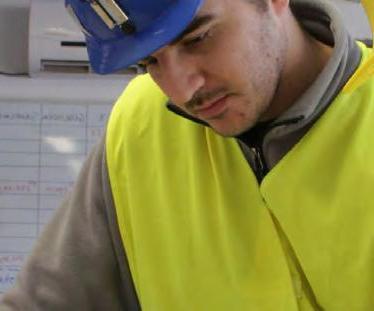3 minute read
6. Materials & Residues
Monitoring dust
We monitor dust emissions from mining and construction activities for compliance with regulatory limits, which include dust emissions inside our installations, at our mine boundaries and within the surrounding villages, in order to proactively identify any potential impact. We are currently developing a formal fugitive Dust Control Plan for each site with operational control measures to minimize fugitive emissions and ensure compliance with applicable regulatory standards, as well as a formal Air Quality Monitoring Plan (AQMP).
0
dust violations against regulatory limits
cases of air emissions related to our mining activities exceeding regulatory limits
Monitoring air quality
Air pollutants: Our most material air pollutants include Nitrogen Dioxide (NO2), Sulphur Dioxide (SO2) and PM10 and PM2.5 (i.e. particulate matter lower than 10 microns and 2.5 microns, respectively). According to a formally established procedure, in case monitoring stations exceed emission limits: • We proceed with the event’s quality control, where we evaluate the devices’ accuracy • If the event is determined as real and not false, we seek to identify any correlation with our activities • If the event is identified as being correlated with our activities, we proceed with the necessary corrective actions. In order to support our data and ensure optimal accuracy, we also utilize respective measurements from the Institute of Informatics & Telecommunications (IIT) at the National Centre for Scientific Research ‘Demokritos’, which indicated that all cases of exceeding air emissions (e.g. SOx, NOx, PM) in 2020 were related to dust from the Sahara Desert or burning wood for heating in nearby villages during the winter. Refrigerants: At the same time, we monitor consumption of refrigerants for our operations and do not use any harmful refrigerants, although at the moment we do not apply any practices to reduce their use (e.g. specialized employee trainings), as the respective consumption is minimal.
0
6 | Materials & Residues
Mining generates various forms of waste, including overburden, tailings, slag, sludge, mine water and waste rock, which is the majority of waste, being extracted from the mining area to access ore and has no economic value. Therefore, respective challenges faced by mining companies mainly relate to removal, cleaning and rehabilitation of old mining tailings and waste rock, as well as the de-watering (i.e. removal of water from solid material or soil) and filtration of tailings for use in backfill.
Did you Know?
Use of Arsenic (As)
Mining does not use Arsenic (As). It coexists with other metals underground and no drill or mining activity uses or creates it. Even though, through our Environmental Monitoring Program, measurements at surface and underground water show that Arsenic concentrations are within legal limits.
Managing waste
We consider the potential environmental impacts of all waste generated by our activities, which is classified as hazardous or non-hazardous, in line with environmental and industrial waste regulations. We record all types of waste generated by our activities and submit their quantities to the relevant authorities and implement practices to: • Reduce waste • Store waste • Reuse waste for other purposes • Recycle waste • Dispose waste safely (i.e. in an environmentally safe manner). Depending on the type of waste generated, we have addressed waste generation by our activities, as well as upstream and downstream in our value chain during our projects’ design phase (including actions to manage significant impacts from waste generated), as well as our rehabilitation programs (see Section 3.1). As a result, we have developed and implement management programs suitable for minimizing risks to the environment or human health. Solid Waste: We collaborate with authorized contractors for waste transportation and management, who are responsible for handling hazardous and non-hazardous materials. We use the following inputs to determine hazardous and non-hazardous waste and quantities:








